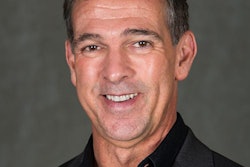For any college freshman, packing up and moving 1,000 miles away from home can be a daunting prospect. For Melisande Short-Colomb, a native of New Orleans and new freshman at Georgetown University this fall, the equation is a bit more complicated.
Colomb’s great-great grandparents, Abraham Mahoney and Mary Ellen Queen, were sold by a former Georgetown president, a Jesuit priest, in 1838. They were victims of one of the largest recorded sales of a slave community to have occurred within the United States. Pressured by the prospect of imminent bankruptcy, the Jesuits sold 272 men, women and children, sending them from Maryland tobacco plantations to the cane fields of Louisiana by ship.
In many ways, Colomb’s decision to attend the university is not just a new step forward for her as an individual but a form of homecoming and a reckoning on behalf of her ancestors.
Appearing at the steps of her freshman dormitory to welcome Diverse to her new home, Colomb cuts a striking figure in a coral sweater that accentuates her white-blond dreadlocks. As Colomb puts it, attending Georgetown is the third book of what she refers to as the trilogy of her life. She is 63 years old and has already lived several lives — as a stay-at-home mother caring for four children for 12 years and as a chef working in the legendary New Orleans culinary industry for another 22 years after that.
“My impetus for doing things at this time of my life is very different than it would be for an 18- or 20-year-old,” she says. “I’ve already done all those things that young people still have to do.”
Colomb lives in a freshman dorm situated on the campus’ main quad, close by Georgetown’s iconic Healy Hall, with its Gothic spires and tower. Some friends recently visited and helped her rearrange the furniture to make it cozier. Now it is home, albeit just for the academic year.
At this point, Colomb’s family history may be familiar to some readers. She has been interviewed by NPR, The Washington Post and several other outlets. “I’ve been doing quite a lot of talking,” she says with a laugh. “It started with The Washington Post. I’ve decided there’s no better way to be introduced to your new town than to have your photograph on the front page of the local newspaper.”
“I’m an Aries,” Colomb adds. “I was born for the limelight.”
When asked if she expected quite this level of media attention, she replies, “Not really, but then, yes, I guess. It ends up being a rather interesting story for a couple reasons — Georgetown’s connections to its slave-holding past and human trafficking, and then my being 63 years old, coming to Georgetown as a first-year student. That’s almost its own story.”
So far, Colomb has settled into her new life and is keeping busy. She has a work-study job at the Lauinger Library, where the school archives are housed. Among the archives are more than 100 boxes of material from the Maryland Province of the Society of Jesus, containing numerous references to Georgetown’s slaveholding past, which by extension, includes Colomb’s enslaved ancestors.
The Georgetown Slavery Archive, an initiative headed by Georgetown history professor Dr. Adam Rothman, is investigating those archival records and other sources to glean new insights about Georgetown’s connection to slavery.
In 2015, Georgetown launched the Working Group on Slavery, Memory and Reconciliation, which brought together community members to reflect on Georgetown’s past and offer measures to address the painful reality of the institution having once sold off human beings to lives of deprivation and hardship in Louisiana. One year later, Georgetown announced a series of measures designed to begin to make amends for its past.
While recent discussions about Georgetown’s ties to slavery have often implied that history was a “surprise” to the institution, the relationship has long been known to historians, according to Rothman.
“This history was not secret and was not hidden away,” he says. “Jesuit historians have been writing about it from the early 20th century.”
In fact, a bicentennial history of the university, published in 1989, included reference to the sale, and scholarly articles about the Jesuit slaves were written as early as the 1910s. Georgetown’s American studies department developed an entire curriculum around Georgetown and slavery in the 1990s. A Georgetown historian created the first digital history project called the Jesuit Plantation Project — or “Georgetown Slavery Archives 1.0,” as Rothman puts it — in the 1990s, which featured scanned documents relating to the 1838 sale. The website can now only be found using the Wayback Machine, a search engine that digs up vanished websites.
Yet the announcement of the working group in 2015 caught the attention of the media and subsequently the nation in a way that it had not before. Since then, media coverage has only amplified the issue and has shone a brighter light on the historic legacy of slavery at many institutions across the country, from Harvard to Ole Miss.
At a ceremony in September 2016, Georgetown President John J. DeGioia announced that the university would give descendants the same consideration that legacy students and other members of the Georgetown community receive. Georgetown will not offer scholarships specific to descendants, but if they demonstrate financial need, this will be covered by an existing policy. Georgetown has a longstanding commitment to meeting accepted students’ full financial needs. The gesture, nevertheless, was and remains unprecedented among colleges and universities within the United States.
“We provide care and respect for the members of the Georgetown community — faculty, staff, alumni — those with an enduring relationship with Georgetown,” DeGioia said. “We will provide the same care and respect to the descendants.”
Many descendants and others with an interest in Georgetown’s affairs argue that the commitment to give descendants preferential treatment in the admissions process does not go far enough. After all, not every descendant will want to attend Georgetown or have the means to do so.
By and large, Colomb agrees with their concerns. There is more that Georgetown could do to reach out to descendants, some of whom “are still living where you dropped them off 180 years ago, many living below the poverty level,” as Colomb puts it.
Asking descendants to leap over several entrenched barriers in order to receive Georgetown’s most tangible benefit on offer — the chance to be considered for admittance and to potentially benefit from Georgetown’s generous commitment to meet 100 percent of demonstrated financial need — ignores certain realities, according to Colomb. Many of the descendants are still living close by the Louisiana plantations where they were deposited, in communities with relatively limited economic and educational opportunities.
Georgetown’s educational offerings will not necessarily match every descendant’s academic skills and interests. “There are many people who would benefit from going to their state schools, because there are bigger and more inclusive programs for students,” Colomb says.
The prospect of attending an institution that sold their ancestors off into backbreaking labor in Louisiana might also reasonably be expected to give some descendants pause. “My position is, I just can’t trust anybody who sold my family,” she says. “It’s nice that I’m here, we good and everything — but this is not a feel good story.”
For her part, Colomb gave the matter careful thought before deciding to apply. She also had encouragement from Richard Cellini, a Georgetown alumnus who is leading the Georgetown Memory Project, an independent initiative investigating genealogical records to identify descendants of the 1838 sale.
As of early October, the Georgetown Memory Project has identified more than 5,000 direct descendants of the 272 individuals sold. Many might never have known about their connection to the institution were it not for the Georgetown Memory Project.
Although Colomb knew that her ancestors originally lived in Maryland, the details of how they came to reside in Louisiana were a bit murky. The matter became clear after Colomb received a Facebook message from Judy Riffel, one of the genealogists working with the Georgetown Memory Project, in the August of 2016, asking if she was related to Mary Ellen Queen.
The knowledge that her ancestors had been sold by the Jesuits came as a bombshell. “It felt terrible,” Colomb says. She was set to go on vacation and spent the duration reading everything she could about the Jesuits, the colony of Maryland and even going through U.S. history to better understand how this event had come to be.
Colomb and Cellini later struck up a correspondence. “He was very encouraging in thinking, you can go ahead and do this,” Colomb says. “He’s a good guy. I admire his dedication and love for the university, even though it has gone against the grain of the university.”
Another descendant, Shepherd Thomas, is also enrolled in Georgetown this fall. “He’s blending in to being a college student,” Colomb says. “I was going to stand out regardless.”
Thomas is 20 years old and, like Colomb, is from New Orleans.
Colomb says she will continue to grapple with the complexities of the past as she continues along her path at Georgetown. She notes that these are not issues specific to Georgetown but are intertwined in the histories of nearly every institution that predates the Civil War. There is no simple fix and no easy resolution, she says.
“I would certainly like to continue to use this experience as a platform to instigate conversation, discourse and discussions across the United States about the continuing legacies of slavery and disenfranchisement,” Colomb says.
This article appeared in the November 16, 2017 issue of Diverse magazine.
















